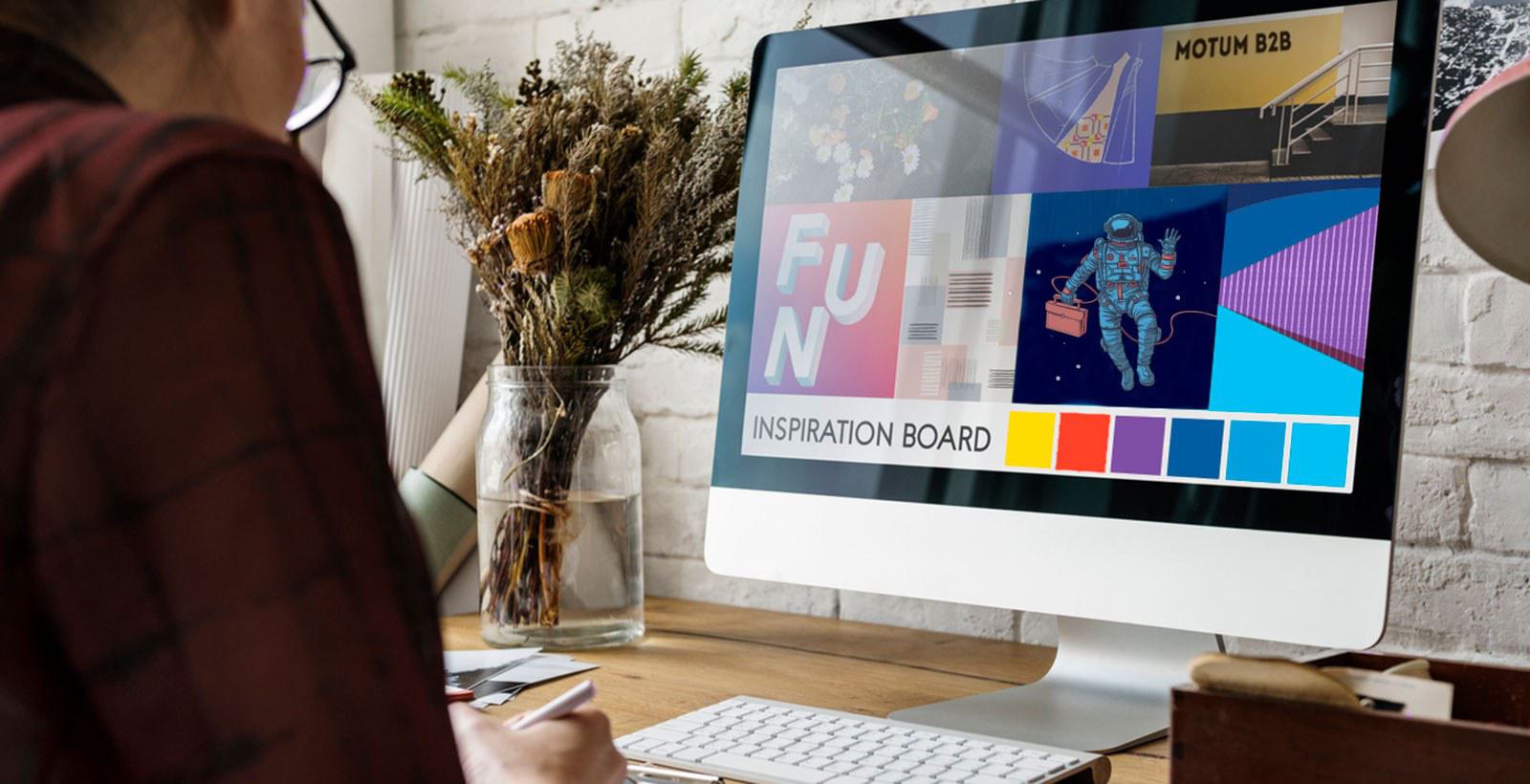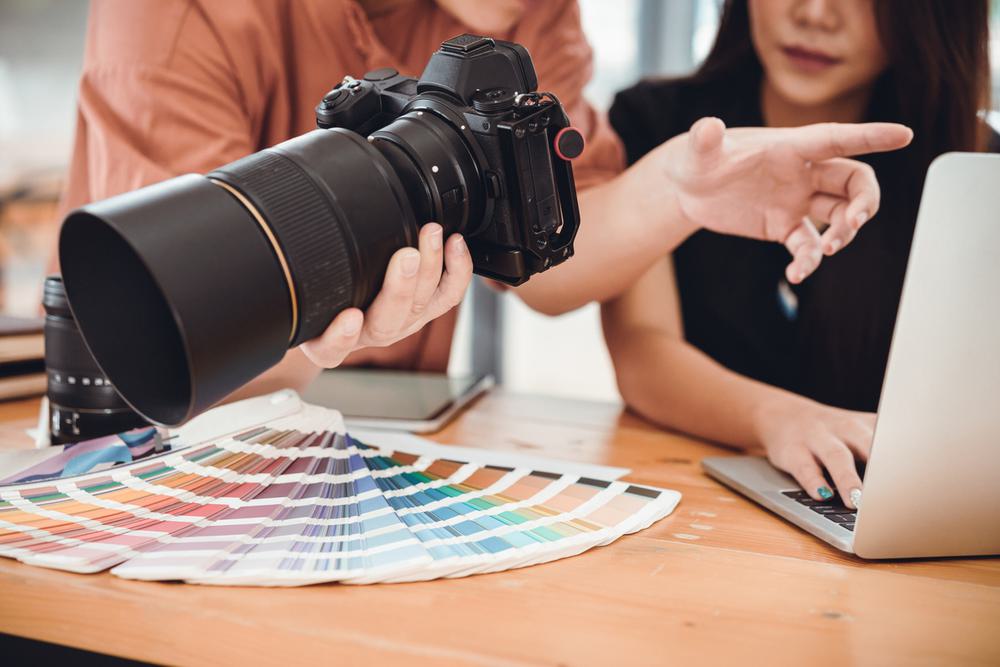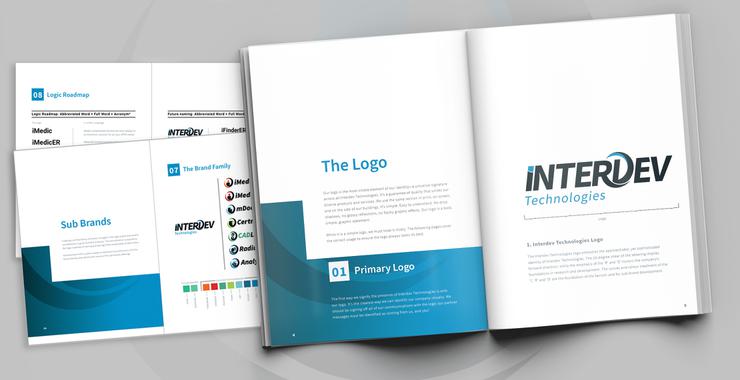How to choose the right images for your brand
Whether you’re creating them from scratch or finding them in a stock photo library, there’s a trick to customizing images to fit your brand persona.

According to an MIT study, the human brain can process images in as little as 13 milliseconds. For marketers, that doesn’t leave a lot of time to convey one message, let alone your entire brand identity.
Don’t despair, though — even in so little time, images have the power to evoke strong emotions within a viewer. If you curate, create, and customize images wisely, they can help tell your brand’s story and make an impression in the blink of an eye.
Brand imagery could be something as simple as the hero image on a blog post, or any of the visuals used in a video, infographic, website, ad, social media post — the list goes on.
The trick is choosing images that match your brand persona and resonate with your audience, whether it’s stock imagery, professional photos, or custom graphics.
First, get to know your brand
It all starts with knowing yourself. If you want your audience to recognize your brand in an image, understanding your brand personality or brand persona is non-negotiable.
You really need to think about, ‘What is going to be important to the ideal customer, and how do I want my brand to connect with them?’ Jeanette Thompson, Marketing and Brand Strategist
“If you don’t define the core values and brand persona you want to project, your imagery will be less focused,” says Jeanette Thompson, Marketing and Brand Strategist at Motum B2B. “You might end up with something wildly different from what you’re trying to say.”
The brand persona also needs to align with what you know about your target audience, their priorities, and their pain points.
“If it doesn’t have the right emotional connection to capture your target audience, then it won’t be very helpful in attracting attention to the message,” Thompson explains. “You really need to think about, ‘What is going to be important to the ideal customer, and how do I want my brand to connect with them?’”
Once you have those details in mind, you can jump into the visuals.
Stock photos: How to choose and adapt them to your brand
When you’re not able to create your own professional photos or illustrations, stock images are often the most practical option. The inherent risk of stock imagery is that it’s possible for other brands to use the same images as you.
Thompson says there are still plenty of ways to differentiate your images.
“If you have an established brand palette of colors, you can find images that match the colours of your brand,” she explains, adding that many stock photo websites allow you to filter results by colour.
You can even refine your search query in terms of the tone you want, like “professional” or “funny.” In general, using more specific search terms goes a long way towards finding more images that better match your brand and purpose.
Alternatively, for those with Photoshop skills or image editing tools, you can change the colours in a standard stock photo to make it match your brand palette. You can also take it a step further by adding elements personalized to your brand — for example, an image of your product in the scene, a computer monitor with your software onscreen, or your company logo on a t-shirt.
“That makes it feel like a custom image,” Thompson says. “And it also resonates with your brand.”
Professional (or amateur) photos: How to take them
If you have access to photography equipment, a professional photographer, or even just your phone and a can-do attitude, you may want to take pictures instead of sourcing them online. Thompson has a few suggestions to keep your photoshoot focused.
“Again, you want to come back to the purpose. If you’re taking those custom photos, how are you going to use them?” she says. Before the photo session even begins, put together a creative brief so your photographer (whether it’s you, a colleague, or a hired pro) has a guide to reference.

To get the most out of your photo session, it’s a good idea to take as many pictures as possible in a variety of scenarios. That way you can build up a vault of images of your facilities, products, staff, field workers, head office — anything that might resonate with your target audience. You can use these in anything from your website to blogs to ads to social media.
“If you’re going to use them on something like a big banner for your website, it’s important to make sure you have wide shots,” Thompson advises. “That will give you lots of versatility. For the same reason, I would also take the same shot from many different angles.”
More pictures mean more options. If you’re feeling adventurous, you can even take some short videos for a social media story.
Custom illustrations: How to keep them focused
To really grab a viewer’s attention and set your brand apart, custom illustrations or graphics are where it’s at. This is another area where Thompson recommends sticking to the brand identity and core values and communicating that to your illustrator.
“If your brand persona was whimsical, you could have a lot more fun with the types of illustrations,” she explains. “But if it's a totally professional persona, you're going to illustrate that a lot differently.”
For example, a playful persona might feature more rounded characters with carefree postures, where a professional image might look more rigid and straight. In either case, an illustrator can adapt your brand’s colour palette to really make the images yours.
“If you have a brand guide that outlines the tone and voice of your messaging, it's important to share that information with an illustrator,” Thompson says. “It's helpful for them to understand how the brand speaks in words, because the images, illustrations, or infographics will match up with the content and how the brand gets written as well.”
Consistency between the messages and images will help the overall presentation so it resonates with the target audience. Just like the photoshoot option, having a clear mood board or creative brief with defined brand guidelines will help keep your illustrations strong from concept to final result.
Wait, what about AI imagery?
Image generators can be fun and create unique content, but they require a critical eye. Jeanette Thompson, Marketing and Brand Strategist
Yes, you can use AI tools to create branded images — but they come with caveats. We’ve all noticed the tendency of AI-generated images to amalgamate human limbs or multiply them (or both).
“Image generators can be fun and create unique content, but they require a critical eye,” says Thompson.
Using text prompts is a skill in itself, so if you’re new to AI tools, creating a viable image is not as easy as it seems. There are also several ethical and legal risks to keep in mind, including the potential to misappropriate an existing artist’s work by mistake, which could harm original creators as well as your brand.
That said, some promising image editing tools using generative AI have launched recently, like this suite from Adobe. You can use them to add, edit, or remove elements from existing images or tweak colour palettes using text prompts.
You might use AI tools like these to incorporate branded colours, icons, or shapes into an image. Until the technology improves, we still recommend working with someone who has expertise in design to ensure everything fully aligns with your brand (and has the right number of fingers).
Overall imagery tips to keep in mind
No matter what type of image you choose to create, there are a few general tips you can use to keep them consistent with your brand.
Some brands have particular treatments, like blurred backgrounds in images to keep the focus on people or products featured in the foreground. Others add branded shapes or lines with the brand’s colours to give everything a unified feel.
You can also think about the symbolism contained in each image. Elements like tools or laboratory equipment can convey technical expertise, whereas images of multiple people can signify collaboration or partnership.
If you work with a marketing agency, it’s especially important to communicate with them about the creative direction you want to maintain throughout a campaign. You can leverage these experts for recommendations about how to add branded elements to any image, how to set up the right shot for a photo session, or how to choose an illustration style.

